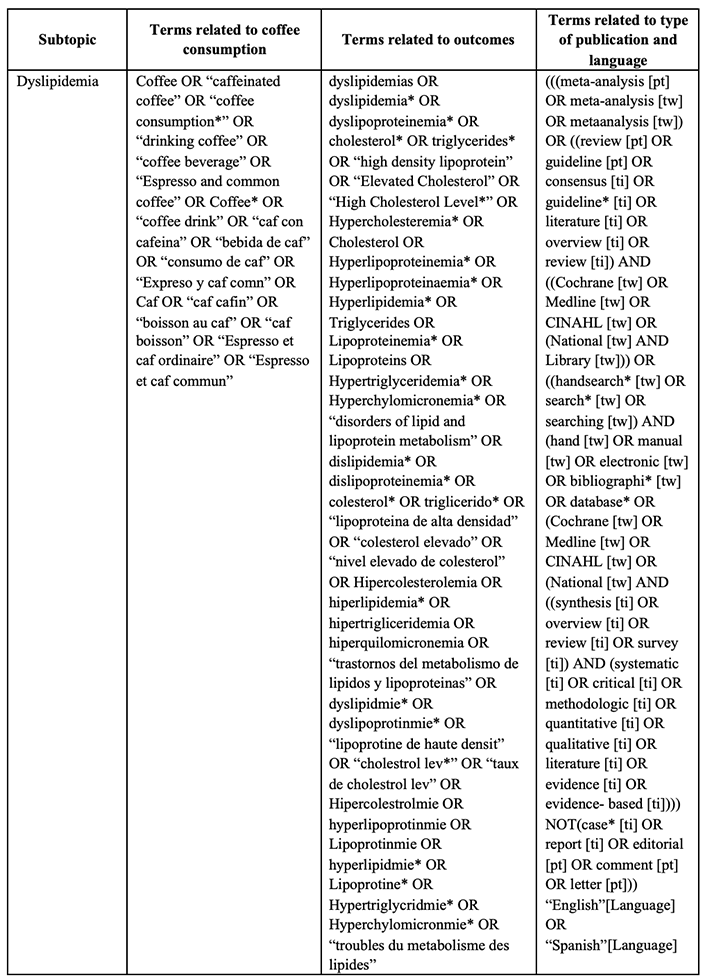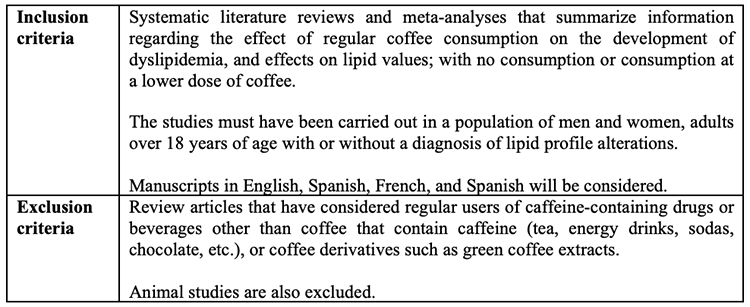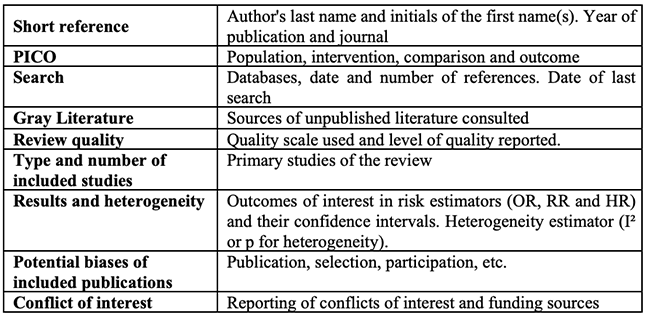Introduction
Hypercholesterolemia plays an important role in the development of cardiovascular disease (CVD), especially in the relationship between the amount of total cholesterol (TC), low-density lipoprotein (LDL) values, and the risk of cardiovascular events. People with hyperlipidemia have twice the risk of developing CVD compared to those with normal total cholesterol concentrations (1).
HDL cholesterol is a protective factor in CVD, while a low level of HDL, together with a high level of triglycerides (TG) may cause a higher incidence of CVD (2).
Coffee is a beverage with multiple effects on metabolism and it is estimated that around 3.5 billion cups of coffee are consumed worldwide every day (3). Several studies have found potential benefits with reduced risk of metabolic syndrome, obesity, and diabetes (4). Additionally, it has been found that moderate coffee consumption can have favorable effects in reducing cardiovascular mortality and CVD risk, among others (5,6).
There are several mechanisms by which coffee modifies the lipid profile. It has been described to have effects on lipogenesis, lipolysis, fatty acid ß-oxidation, lipid transport, and fat digestion. These mechanisms are associated with the various components of the beverage, such as the neuromodulatory caffeine, which acts as an antagonist of the adenosine receptor, as well as other components such as chlorogenic acids, trigonelline, or cafestol (4).
Among the effects of caffeine, it has been found to be associated with increased fat oxidation and glycogen mobilization in muscles, increased lipolysis and decreased body fat (7). Intake of green coffee bean extract, which provides 50 to 100 mg/day of chlorogenic acid, is associated with reductions in TC and LDL-C concentrations (between 8-10 and 3.5-5.5 mg/dL, respectively) in hypercholesterolemic subjects (8).
For their part, the diterpenes cafestol and kahweol can increase the amount of total cholesterol in the blood by up to 30 mg/dL. This occurs because cafestol is a farnesoid X receptor agonist, which leads to an inhibition of bile acid synthesis and increased blood cholesterol levels. However, cafestol has also shown beneficial biological effects with antidiabetic, anticancer, and anti-inflammatory properties (4,9).
Some studies have found an unfavorable effect on the lipid profile, depending on the presentation and type of coffee consumed. In a randomized clinical trial, it was found that coffee with caffeine had significant effects on the increase of LDL-C, TC and TG (7), although other publications affirm that the presence of caffeine does not modify lipid profile variables (9).
On the other hand, compared to filtered coffee, unfiltered coffee has significantly increasing effects in patients with a history of hyperlipidemia on TC, LDL-C, and TG, and these effects increase with higher consumption (number of cups). This is considered to be a consequence of the presence of diterpenes, which are usually removed from the beverage when filters are used. Kahweol and cafestol increase the activity of cholesteryl ester transfer protein and phospholipid transfer protein while decreasing the activity of lecithin:cholesterol acyltransferase, thus contributing to an increase in LDL-C (7,9-12). In contrast, filtered coffee does not appear to modify serum lipids, but has been associated with an increased risk of metabolic syndrome (13).
Similarly, although espresso-type preparations have higher concentrations of diterpenes, the reduced portion size of the beverage decreases the amount consumed. Percolated and instant preparations have low levels of cafestol and kahweol, while French press preparations have the highest concentration of these diterpenes (9).
Considering that dyslipidemia is a cause of CVD (4) and that the literature on the impact of coffee on this condition is not conclusive regarding favorable and unfavorable findings, it is important to systematically review the best available evidence and identify the effects of the beverage on people's health.
Objectives
This umbrella review of the literature aims to analyze, compare, and synthesize the evidence from available systematic reviews and meta-analyses on the effect of habitual coffee consumption on the development of dyslipidemia. The specific objectives are to summarize and analyze the available evidence regarding the effect of habitual coffee consumption and its dose-response relationship on the values of total cholesterol, LDL, HDL, and triglycerides, as well as the risk of developing dyslipidemia.
Methods
The review protocol was designed according to the guidelines of the Cochrane Collaboration and an adaptation of the Prisma-P checklist for protocols of systematic literature reviews and meta-analyses (14).
Eligibility criteria considered systematic literature reviews and meta-analyses summarizing information regarding the effects of regular coffee consumption on the development of dyslipidemia and effects on lipid values.
To be included in this review, the studies must have been performed in a population of adult men or women over 18 years of age, with or without a diagnosis of lipid profile alterations. Manuscripts in English, Spanish, and French will be considered, due to the possibility of translation into these languages by the research team. Review articles that have considered regular users of caffeine-containing drugs or beverages other than coffee that contain caffeine (tea, energy drinks, sodas, chocolate, etc.) or coffee derivatives, such as green coffee extracts, will not be included. Likewise, studies carried out on animals will be excluded.
The primary outcomes will be: increase or decrease in TC values, LDL cholesterol, triglycerides, and HDL, and the development of dyslipidemias.
The literature will be searched in Medline (via Pubmed), Embase, Cochrane Collaboration and LILACS (via BVS) databases. For this purpose, strategies will be designed that include controlled terms according to the base and other terms corresponding to the selected topics (Table 1) (15,16). Additionally, a secondary search will be carried out with a snowball strategy with the references cited in the manuscripts.
Three reviewers will independently select manuscripts in two stages through Rayyan QCRI (17). In the first stage, titles and abstracts will be screened, and in the second stage, eligibility criteria will be applied to full-text articles (Table 2). Discrepancies will be resolved by consensus. Additionally, duplication of primary studies in the different systematic reviews will be taken into account, and a secondary search of the references of the selected articles will be carried out manually and by snowball sampling.
References will be stored and duplicates will be eliminated using the EndNote reference manager. Inclusion and exclusion criteria will be applied to references in two stages, through Rayyan QCRI (17). In the first, three independent reviewers will screen titles and abstracts; in the second, two independent reviewers will apply the criteria to the preselected full-text manuscripts (Table 2). Discrepancies will be resolved by consensus.
Data collection and analysis
Data extraction will be carried out by three researchers following the matrix in Table 3. The quality of the selected documents will be evaluated using the Assessing Methodological Quality for Systematic Reviews (AMSTAR) instrument (18) and information will be extracted from those publications with a score of more than 60% (more than 7 points). Disagreements will be resolved by consensus and voting.
The kappa coefficient will be used to assess the degree of agreement among reviewers. The results of the systematic reviews will be summarized in tabular form for each of the outcomes of interest. The quality of the secondary studies will be presented in the tables, and the heterogeneity of the results will be taken into account using the I2 estimator. A sensitivity analysis of the results will be carried out by subgroups according to the quality of the included studies and by the dose of exposure to coffee consumption. Publication biases of the included secondary studies will be evaluated. Figures will be designed to facilitate the understanding of the relevant results.











 texto em
texto em 






